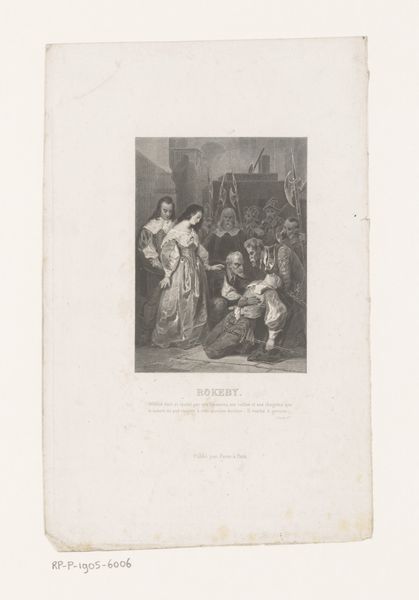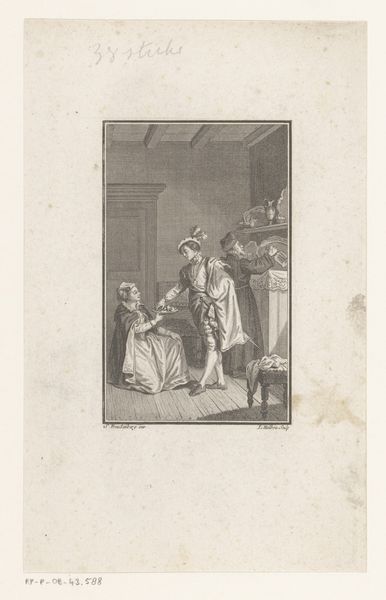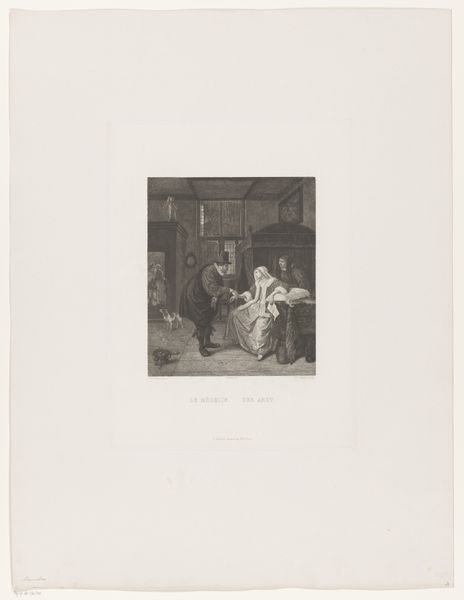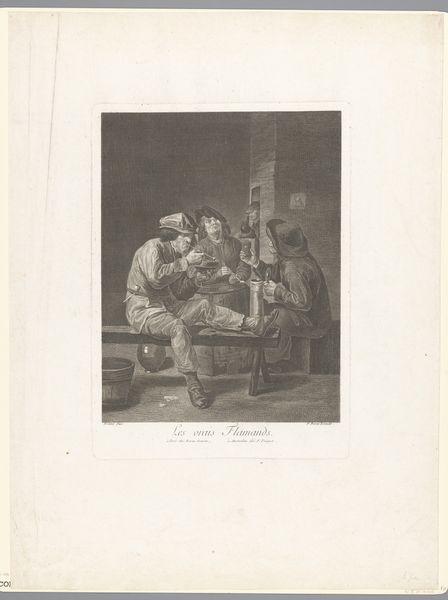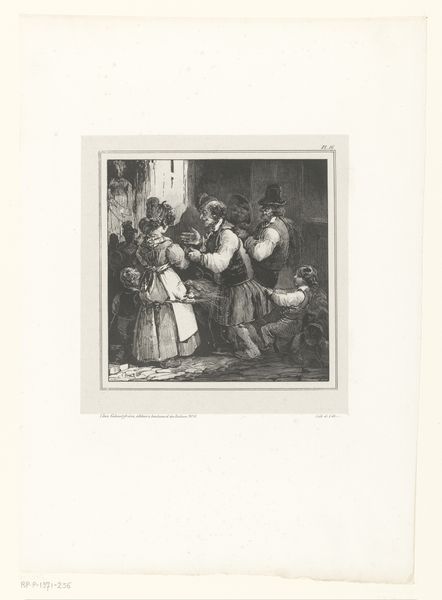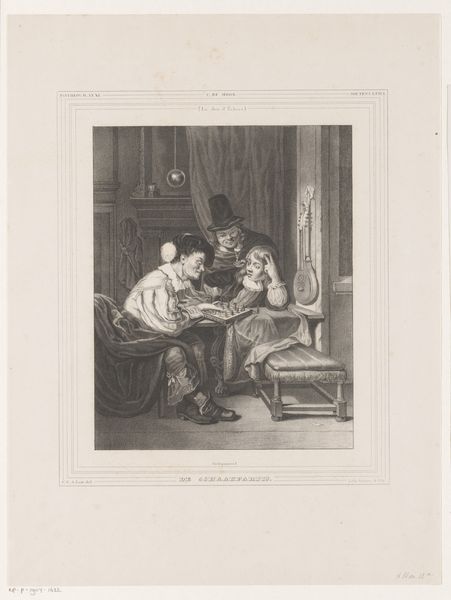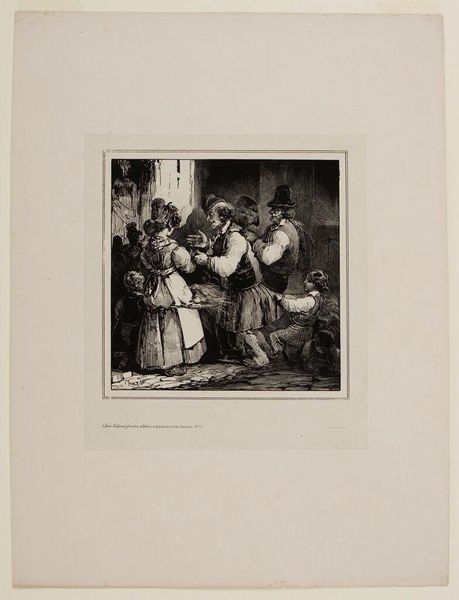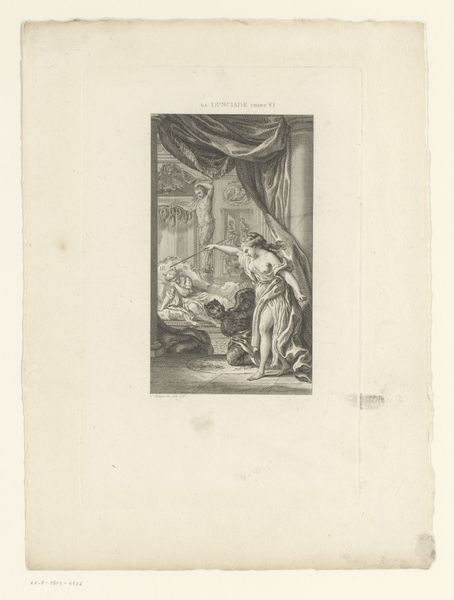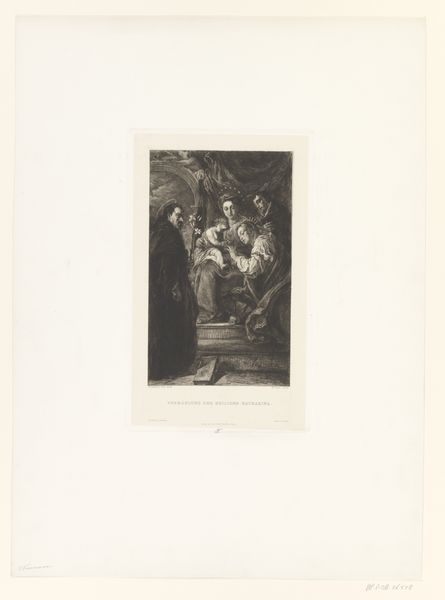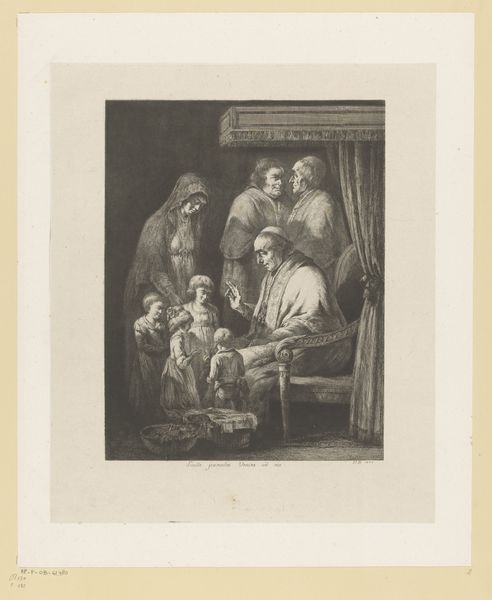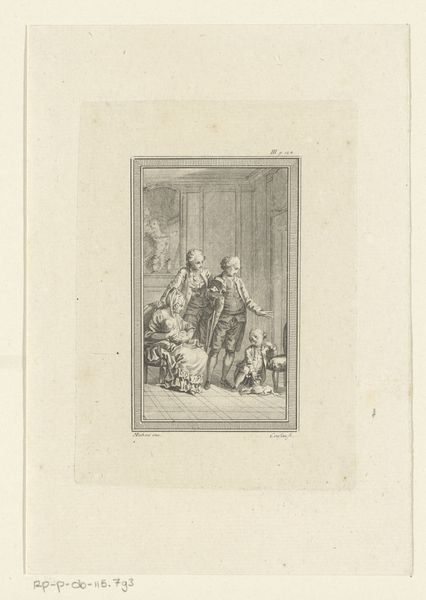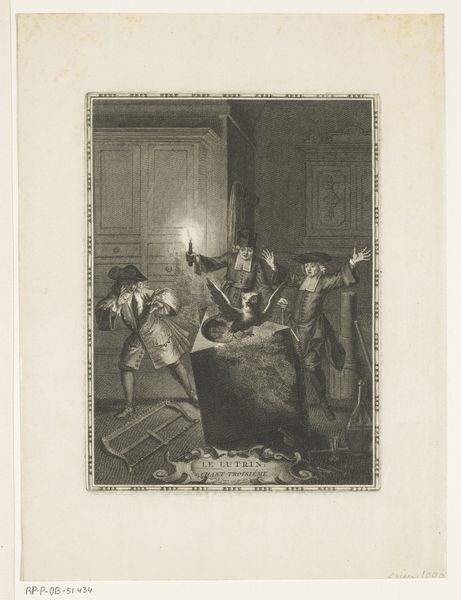
print, engraving
#
narrative-art
# print
#
figuration
#
history-painting
#
engraving
Dimensions: height 288 mm, width 197 mm
Copyright: Rijks Museum: Open Domain
Editor: Here we have Jean-Denis Nargeot’s "Aanbidding der Koningen," or "Adoration of the Magi," created in 1859. It’s a print, an engraving. I’m struck by the figures tightly packed into the composition and wonder about its artistic interpretation. What do you see in this piece, focusing on its visual components? Curator: Looking at the composition, we can analyze how Nargeot directs our gaze. The clustering of figures around the central group—Mary, Jesus, and the magi—immediately creates a focal point. Observe the interplay of light and shadow. Nargeot masterfully uses engraving techniques to create depth and contrast. How do you feel the use of chiaroscuro impacts the overall reading of the scene? Editor: The light definitely draws my eyes to the baby Jesus and Mary. The darker background emphasizes their importance. It’s like a spotlight effect created solely through tonal variation. Curator: Precisely. Nargeot’s work here embodies the traditional elements of representational art. He establishes a formal hierarchy, centering our attention on the sacred figures through carefully structured lines and values. The texture achieved is also worth considering – observe the rendering of fabrics and the beards. These textural elements play an important role in enriching the work. Editor: So it's not just about what's depicted, but also *how* it's depicted. It's clear how much control Nargeot has over the visual elements to guide our interpretation. I see now that even within such a conventional scene, there's so much to explore through formal analysis. Curator: Precisely. Through line, light, and composition, Nargeot constructs a powerful visual narrative. It offers us more than a scene, a masterclass in the capabilities of engravings to move an audience through visual rhetoric.
Comments
No comments
Be the first to comment and join the conversation on the ultimate creative platform.
